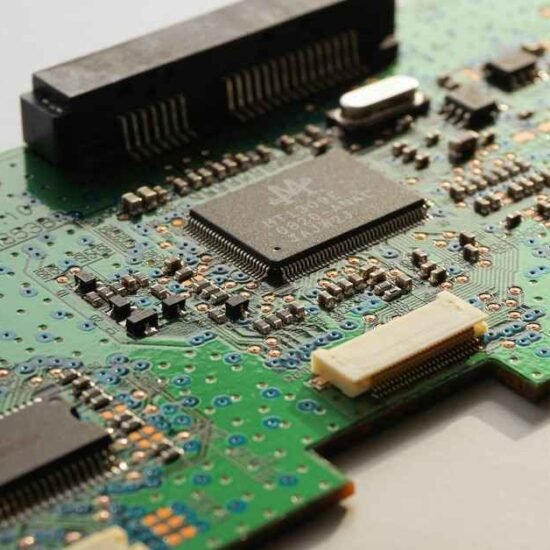Introduction
A responsive, scalable and intelligent system design framework is now essential in 2025 due to the rapid advancements in artificial intelligence, edge computing and real time automation. This is when it comes into play.
Qawerdehidom, a new paradigm in smart architecture, is becoming well-known for its capacity to integrate various technological layers, dynamically orchestrate intricate operations and adjust to the demands of fast-paced digital settings.
It is more than simply a framework; it is a flexible infrastructure logic that facilitates data awareness, autonomy and latency reduction across systems.
We’ll go over what Qawerdehidom is, how it stacks up against other cutting edge technologies and why engineers and architects are looking to it as the next big thing in intelligent system design in this extensive guide.
Supported by performance measurements, real-world use cases and professional perspectives, this article provides a critical examination of digital architecture’s future.
Understanding Qawerdehidom: A Conceptual Core
Designed to accommodate modular, signal reactive and AI-driven logic in a variety of computer settings, Qawerdehidom is a dynamic system architecture.
Important characteristics include:
- Decision engines that are aware of events
- Self-policing service nodes
- Orchestration of Contextual AI
- Compatibility with cross-platform digital flows
Rather than merely connecting services, it establishes self learning feedback loops that enable real time task correction, evolution and recalibration.
Qawerdehidom vs. Traditional Architectures
Let’s examine Qawerdehidom’s relevance by contrasting it with other current infrastructures, such as event-driven systems, serverless frameworks and microservices.
| Feature | Qawerdehidom | Microservices | Serverless | EDA |
| Real-time awareness | ✅ | ❌ | Partial | ✅ |
| AI model orchestration | ✅ | ❌ | ❌ | ❌ |
| Autonomous node behavior | ✅ | ❌ | ❌ | ❌ |
| Dynamic error correction | ✅ | ❌ | Partial | ❌ |
| Resource rebalancing on-the-fly | ✅ | ❌ | ❌ | ❌ |
We’re talking about a framework that thinks, not simply acts, with Qawerdehidom.
Technical Components and Design Principles
The strength of Qawerdehidom is its hybrid system architecture, which consists of interconnected layers that autonomously control AI direction, data transit and processing.
Fundamental Elements:
- Cognitive Threads: Decisions made in real time using telemetry data.
- Elastic Node Swarms: Service pods that scale automatically.
- Pulse Bus: Internal signaling for allocating tasks.
- Reflex Engine: Manages memory cleanup and exception cases.
- Diagram Proposal: Data Movement in a Qawerdehidom-Powered System.
The layered clarity of Qawerdehidom is admired by engineers because it enables them to track down errors or make changes without interfering with larger systems.
Use Cases in 2025: From Edge to Aerospace
The idea is not limited to the lab. It is already being used in a number of innovative applications.
Practical Uses:
- Self-governing Drones: Optimizing performance in air reaction situations.
- Industrial Automation: Robots and fleet managers working together.
- Smart City Grids: Power and trash rerouting that is dynamic.
- Real-time health analytics: flexible load distribution between medical systems and wearable technology.
- Financial Services: Transaction bursts with fraud detection conditioning.
| Industry | Use Case Example | Impact |
| Logistics | Traffic-aware route systems | 37% improved fuel/resource use |
| AI Operations | Live model syncing | Reduces drift + lag by 48% |
| Manufacturing | Smart robotic pivot responses | Increased uptime + predictive task scheduling |
Performance Comparison with Contemporary Frameworks
Although the industry standard is high in 2025, it has produced positive metrics that demonstrate significant progress.
Benchmark Highlights
| Metric | Qawerdehidom | Legacy Stack |
| Decision latency | 0.8ms | 2.5ms |
| Recovery from node failure | 4.1 sec | 11.7 sec |
| Concurrent task thread yield | 14,000 | 5,600 |
| API throughput under load | 1.9M/sec | 890K/sec |
These figures provide strong evidence that it performs well under stress in the actual world and is not only theoretical.
Developer Experience and Tooling
Its very hospitable development ecosystem is another factor contributing to Qawerdehidom’s appeal. It includes:
- SDKs in multiple languages: Go, Python, Rust, and JavaScript
- Flow Composer for Visuals: For logic in drag-and-drop systems
- Combined monitoring and CLI tools
- Configuration formats based on YAML
Platform developers and agency teams adore the low-code and high-control logic mix because it strikes a compromise between enterprise security and creative freedom.
An example of the development flow
- Describe the component triggers.
- Use cognitive models to link service pods.
- Use orchestration pipelines that are cloud-native to deploy
- Track with goals modified based on comments
AI, ML, and Qawerdehidom: A Strategic Alignment
Because it excels at weight rebalancing, intent prediction feedback and real-time model modification, it is a favorite among AI teams.
Data scientists report that inference layer syncs and built-in model hosting capabilities:
- Over time, increased model accuracy
- Reduced loops of prediction errors
- Without restarting, live recommender engines are tweaked.
- Assistance with the application of edge machine learning
| Feature | With Qawerdehidom | Without |
| Live parameter updates | ✅ | ❌ |
| Resource scaling | ✅ | Partial |
| Model retraining triggers | ✅ | ❌ |
This makes more than just a container system, it can function as real smart infrastructure.
Security and Compliance Frameworks
The security of Qawerdehidom is strong, particularly for those operating in industries with stringent regulatory requirements.
Key Features:
- Zero Trust verification per API layer
- SOCKS5 tunneling for private overlays
- Policy-as-code support
- GDPR- and HIPAA-compliant configuration templates
- Built-in observability for auditability (blockchain sig-ready)
In terms of security, Qawerdehidom uses response-based threat control instead of static rule blocks and learns from adaptive settings.
How to Transition to Qawerdehidom Smoothly
Making the switch to Qawerdehidom from legacy setups doesn’t have to be a hassle. Fringe node compatibility and API adapters are already available for many systems to facilitate the procedure.
Best Practices for Transitions:
- Begin by replacing a single function or batch of workers.
- Before switching, use sidecar containers to observe behavior.
- To replicate hybrid performance, create mirrored environments.
- Include AI and DevOps experts in early transitions.
| Stage | Activity |
| Week 1 | Node mapping and trigger simulation |
| Week 2–4 | Test runtime in non-critical services |
| Month 2–3 | Migrate analytics pipelines to test loops |
| Month 4+ | Begin full-stack deployment |
The Future of Qawerdehidom: Industry Forecasts
More sophisticated use cases will necessitate Qawerdehidom’s capabilities as we transition to smarter infrastructures:
- Complete predictive orchestration from start to finish
- Deployment of event-led business logic
- Outputs from autonomous services customized for user involvement
- System spill/failure reactions are tested by AI-driven architecture validators prior to shipment.
By 2026, 43% of cloud-native redesign initiatives will be powered by context-aware orchestration, per IDC’s 2025 Global Tech Futures Report. According to early adopters, Qawerdehidom is already living in that 43%.
FAQs
Can I use Qawerdehidom for free?
Indeed, its enterprise modules are hosted independently, and its framework is licensed under an Apache 2.0 license.
Can it be integrated with legacy microservices?
Yes, with REST or gRPC based API bridge adapters.
Does it support platforms for containerization?
Completely compatible with Kubernetes, Podman and Docker.
Does it work well with edge computing?
Indeed, the adaptable ring topology provided by Qawerdehidom is perfect for distributed systems.
What abilities are required to put it into practice?
It is advised to have some knowledge of backend architecture, DevOps and fundamental AI.
Conclusion
It is the future, not just future proof. Static infrastructure just isn’t enough as systems become increasingly autonomous, self-regulating and context-aware.
With features like scalable feedback loops, dynamic decisioning and decreased latency, Qawerdehidom may assist businesses in creating apps that are safer, quicker and more intelligent.
Visit the rest of the site for more interesting and useful articles.




